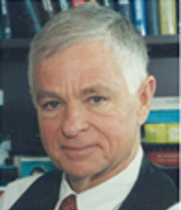Oxford Battery Modelling (mini) Symposium 2022 – Lecture and Dinner
Location
Oxford Maths Institute
Date & Time
Thursday 08 Sep 2022 17.00 -
“Mathematical Modeling of Batteries” by Ralph White
Thursday 8th September
Lecture plus Q&A in the Maths Institute, 1700 for 1730 start
Dinner at Mansfield College, 1900 for 1930 start.
Sign up here.
If you need accommodation in Oxford, why not stay in a college? Details here.
About the speaker
Dr. Ralph E. White is a Professor of Chemical Engineering and a Distinguished Scientist at the University of South Carolina. After graduating from high school in 1960, he spent almost eight years in the US Navy on nuclear powered submarines as an enlisted man before attending college. He graduated from the University of South Carolina with a BS degree in chemical engineering in 1971. After that he attended the University of California at Berkeley and completed his MS degree in 1973 and his PhD in 1977 under the direction of Professor John Newman. Dr. White began his teaching career at Texas A&M University in 1977. He moved in 1993 to the University of South Carolina where he served as the chair of the department of chemical engineering for seven years and then as the dean of the college of engineering and computing for five years. Dr. White has published 352 peer-reviewed journal articles, and he has graduated 52 PhD and 40 MS students. Dr. White has received international awards including the 2000 AESF Scientific Achievement Award for mathematical modeling of the electrodeposition of alloys, the 2013 Olin Palladium Award, the 2016 Vittorio de Nora Award, and the 2018 Linford Award. He has served as a consultant to major companies including Energizer and General Electric, and he has served as a technical expert for several law firms. Dr. White is married to Dr. Marjorie A. Nicholson. They have four children and three grandchildren.
MS degree in 1973 and his PhD in 1977 under the direction of Professor John Newman. Dr. White began his teaching career at Texas A&M University in 1977. He moved in 1993 to the University of South Carolina where he served as the chair of the department of chemical engineering for seven years and then as the dean of the college of engineering and computing for five years. Dr. White has published 352 peer-reviewed journal articles, and he has graduated 52 PhD and 40 MS students. Dr. White has received international awards including the 2000 AESF Scientific Achievement Award for mathematical modeling of the electrodeposition of alloys, the 2013 Olin Palladium Award, the 2016 Vittorio de Nora Award, and the 2018 Linford Award. He has served as a consultant to major companies including Energizer and General Electric, and he has served as a technical expert for several law firms. Dr. White is married to Dr. Marjorie A. Nicholson. They have four children and three grandchildren.
Abstract
Mathematical modeling of batteries on the continuum scale will be reviewed by way of examples taken from my career. The purpose of such modeling is usually to develop a model that can be used to make predictions of the performance and the degradation of the battery of interest. Also, a better understanding of the phenomena that occur in the battery under study is obtained through the development of a mathematical model of the battery. Consequently, misconceptions about how a battery functions can sometimes be dispelled in the process. Typically, we seek a model that is as simple as possible but does not “throw the baby out with the bath water.” In addition, we seek a model that does not require significant computation time since it is necessary
to validate and update the model based on experimental data. It has been and still is a challenge to develop a model of the battery of interest in a timely manner so that it will be useful in industry. Fortunately, software known as COMSOL Multiphysics is available now to assist in the development of models of batteries. This software also includes an extensive library of battery models and step-by-step instructions that can be used to reproduce these models.



